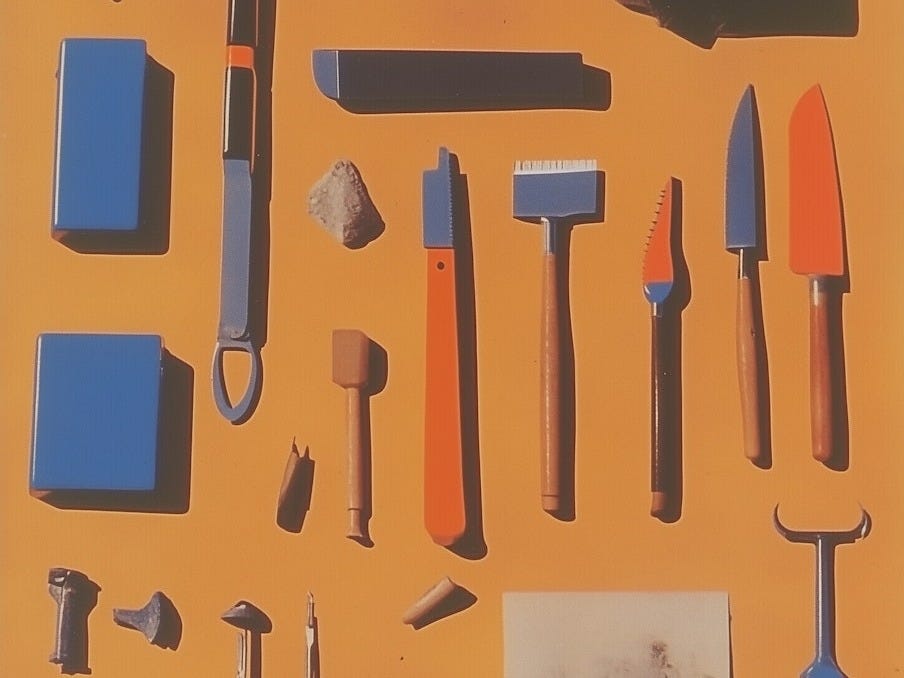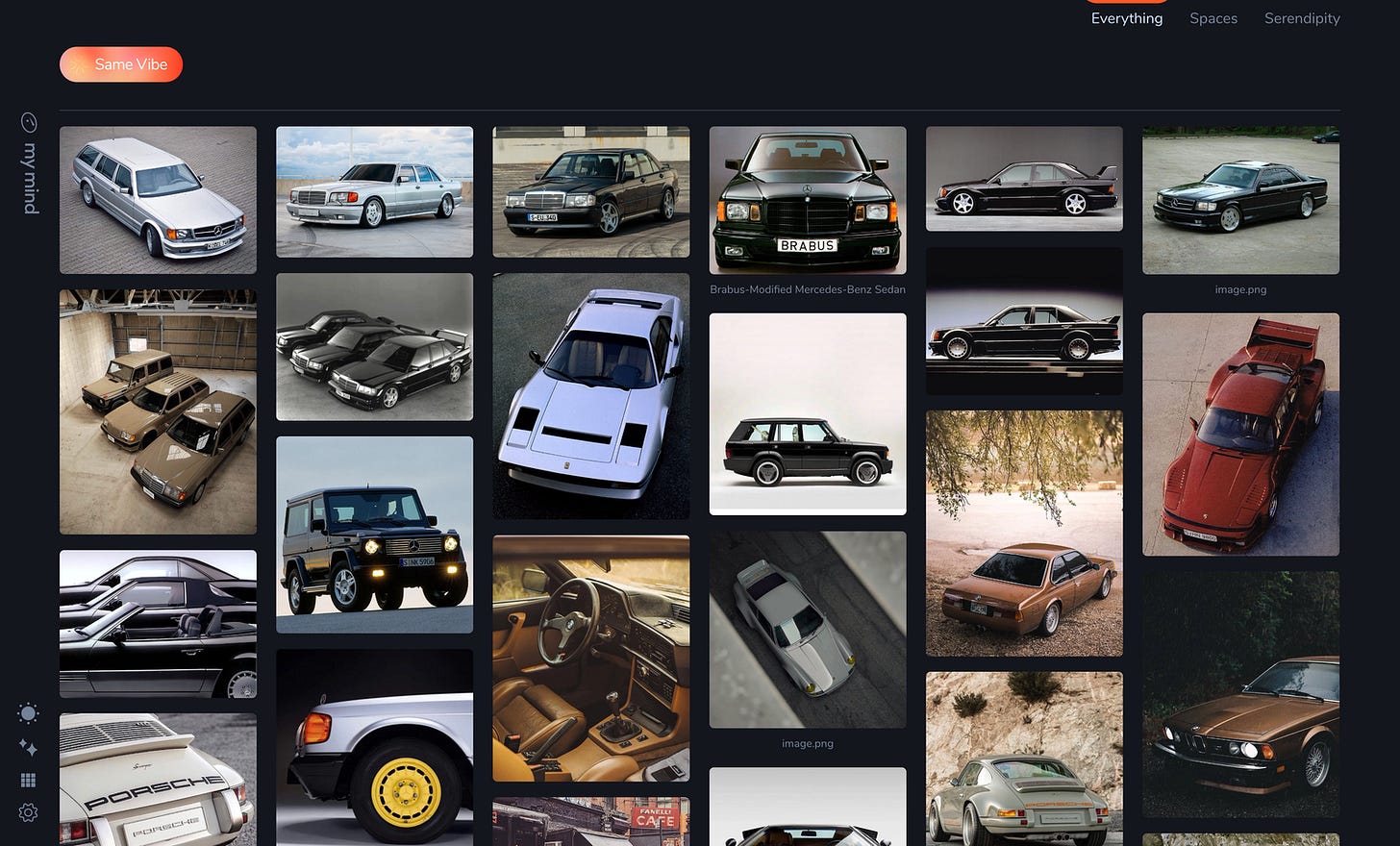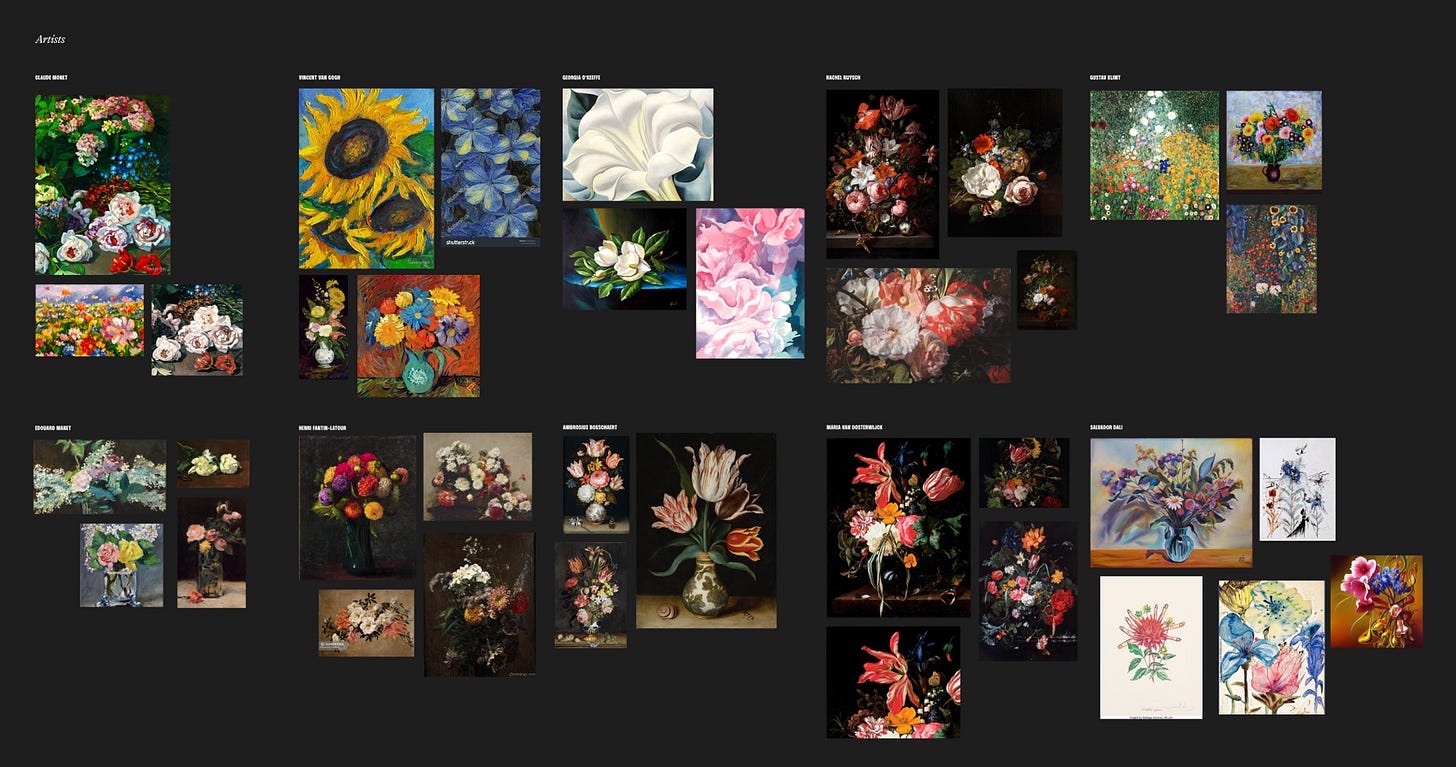Creative Habits: What Sets the Great Ones Apart
What separates good designers from great ones? It's not just talent—it's systematic habits. See how three design leaders built daily practices that compound into remarkable careers.
I've been thinking a lot lately about early career designers, particularly about spotting the difference between good and great potential. After reflecting on designers who've made exceptional career leaps, I've noticed something consistent: it's rarely about raw talent alone. The differentiator often lies in their systems of daily habits and practices.
Coincidentally, I just finished James Clear's 'Atomic Habits,' which articulates this perfectly: 'Habits are the compound interest of self-improvement.' This insight crystallized something I've observed throughout my career—successful designers aren't simply waiting for inspiration or opportunity; they're building systematic habits that compound over time, creating a foundation for excellence that appears almost magical to outside observers.
With this hypothesis in mind, I’ve gathered a few examples of the creative habits of 3 top-level designers that you can start practicing today. Let’s dive in!
Build a secret repertoire that fuels unexpected connections
While the average designer might wait until they’re about to start a project to look for inspiration, founder and creative director Tobias van Schneider takes a much more intentional approach. He has invested a lifelong effort in collecting inspirational references daily in his secret repertoire.
The topic of inspiration is one of my favorites, and I’ve explored it in the past. At its simplest form, it’s all about exploring outside of your field, paying attention to all kinds of inspiration, and capturing those that make you feel something. It doesn’t have to fit anything you’re working on right now; you’re cultivating an ever-growing vault of meaningful references, what Tobias likes to call his “garden of ideas.”
By casting your net wide and maintaining a passive habit of finding meaning in your everyday life, you’ll build a private collection of references that will help you to come up with original ideas by connecting the dots between seemingly unlike sources. You can read his approach in depth in his article “How to build your secret repertoire.”
How you can turn it into a habit:
Daily Single Capture – Save one inspiring thing daily, regardless of current relevance. The constraint makes it stick.
Monthly Field-Hopping – Dedicate each month to collecting inspiration from one non-design discipline. Architecture this month, fashion the next.
Physical Space Gallery – Photograph real-world solutions to design problems in unexpected places like restaurants, airports, or retail.
Embrace the mundane to discover extraordinary possibilities
“The only way to become excellent is to be endlessly fascinated by doing the same thing over and over. You have to fall in love with boredom.”
— James Clear
Following Tobias’ practice of a secret repertoire, let’s look at how Dan Mall connects the dots with his habit of creating an influence page at the beginning of a project, even after +25 years of a truly impressive career.
In an article for Figma’s publication Shortcut, Dan explained how important it is to “warm up” before you start designing, just like any athlete would warm up before competing. One of those warm-ups is creating a page full of inspiration, such as websites, campaigns, editorial design, and any other type of visual material that can shape his creative direction.
Dan Mall’s exploration of his new website is a perfect example. Based on the idea of “helping designers get their flowers,” he gathered samples of flowers from books and remixed editorial layouts. Then, he handpicked seasonal flowers to reimagine them, inspired by Rachel Ruysch's beautiful work. The final art direction is one of a kind, driven by beauty.
The beginning of any project can feel dull and stagnant if you’re not particularly passionate about the topic. That’s why assembling a curated collection of references can help you explore possible futures like Doctor Strange in Infinity War and turn a trivial task into a meaningful and enjoyable practice.
How you can turn it into a habit:
Pre-Constraints Exploration – Create a visual direction in the first hour of any project before practical limitations enter the picture.
Medium Transformation – Reimagine boring deliverables (forms, legal pages) as if they were entirely different media formats.
Analog Warmup – Begin each new project with manual sketching before touching digital tools, like scales, before a concert.
Turn learning into a game where failing is half the fun
Many designers are overwhelmed by all the new and disruptive design tools, especially the ones driven by AI. But not Tommy Geoco, author of UX Tools and the yearly Design Tools Survey.
Although it seems like everyone, their pet, and their neighbor is talking about AI tools, his approach, born out of curiosity and a genuine desire to inspire other designers to explore, brings a fresh perspective to playing with these new tools. He’s constantly sharing sick design inspiration, spotlighting designers who ship, and sharing his own experiments, like when he turned Sesame’s AI voice demo into a D&D dungeon master. You can’t watch this type of exploration and not smile.
In one of his recent experiments, the Bild Wars design battle, he took this passion for learning to another level. Both participants were tasked with creating a landing page for an AI robotics company called Pulse, and 40,000 people watched it happen live. The most interesting part of it all was seeing in practice how tools can empower anyone to solve problems better than ever. Entertainment was just the cherry on top.
Just like it happened with Flash, Photoshop, Sketch, and Figma, the tools help to shape the design practice, and there’s no better way to understand how it fits into your workflow than trying them yourself. Tommy said it best himself, “the designers doing the most interesting production work are not afraid of new tools, they’re using them to do thing that weren’t previously possible.”
How you can turn it into a habit:
Tool-Specific Side Projects – Assign each personal project a different tool you want to learn. Low stakes, high learning.
Weekly AI Experiments – Spend 30 minutes weekly asking "what if?" questions with new AI tools and documenting discoveries.
New Tool Weekend Sprints – When a significant tool launches, give yourself a weekend to build something.
Transitioning to Better Habits
Starting new habits is like switching design tools mid-career—your muscle memory fights you at every turn. Most designers abandon new practices when deadlines hit, falling into the "I'll get back to my inspiration collection next week" trap.
Here's what actually works:
Start impossibly small: Save just one inspirational image today. That's it.
Connect it to existing routines: Add one step to your morning social scroll—hit save on something interesting.
Reduce friction: Keep inspiration tools on your home screen and desktop. When it's easier to do than avoid, you've won.
Expect the dip: Around days 10-14, motivation fades before the habit becomes automatic. This isn't failure—it's part of the process.
These habit transitions don't have to be dramatic reinventions of your workflow. They're more like minor adjustments to your existing patterns—tweaking the kerning of your daily routine rather than switching typefaces entirely.
Parting thoughts
"The ultimate form of intrinsic motivation is when a habit becomes part of your identity. It’s one thing to say I’m the type of person who wants this. It’s something very different to say I’m the type of person who is this."
— James Clear
One of the most powerful ideas I found in Atomic Habits was how your identity is shaped by your habits (and vice versa), either consciously or unconsciously. Instead of adopting habits to achieve goals, you have to choose habits that are aligned with the identity you want to attain.
It takes a quick Google search to know that these three designers have careers that any designer could dream of. Tobias has designed logos that went to space multiple times, Dan Mall ran a 7-figure Design System agency for over a decade, and Tommy Geoco publishes the well-known Annual Design Tools Survey. I’m sure all of them have received countless requests for advice over the years, but if you ask me, the first thing I would do as a junior designer is to take note of their creative habits and try them out myself.
Results might not be noticeable in a day, a week, or a month, but every action is a vote for the type of person you wish to become, and actions speak louder than words. So ask yourself: What type of designer do I want to be? Your habits should reflect that.
It's always more fun to learn with others than doing it alone, so don't hesitate to reach out on Bluesky if you want to continue the conversation. If this article has been helpful, share it with a friend!
Over and out,
Laura ✌️





